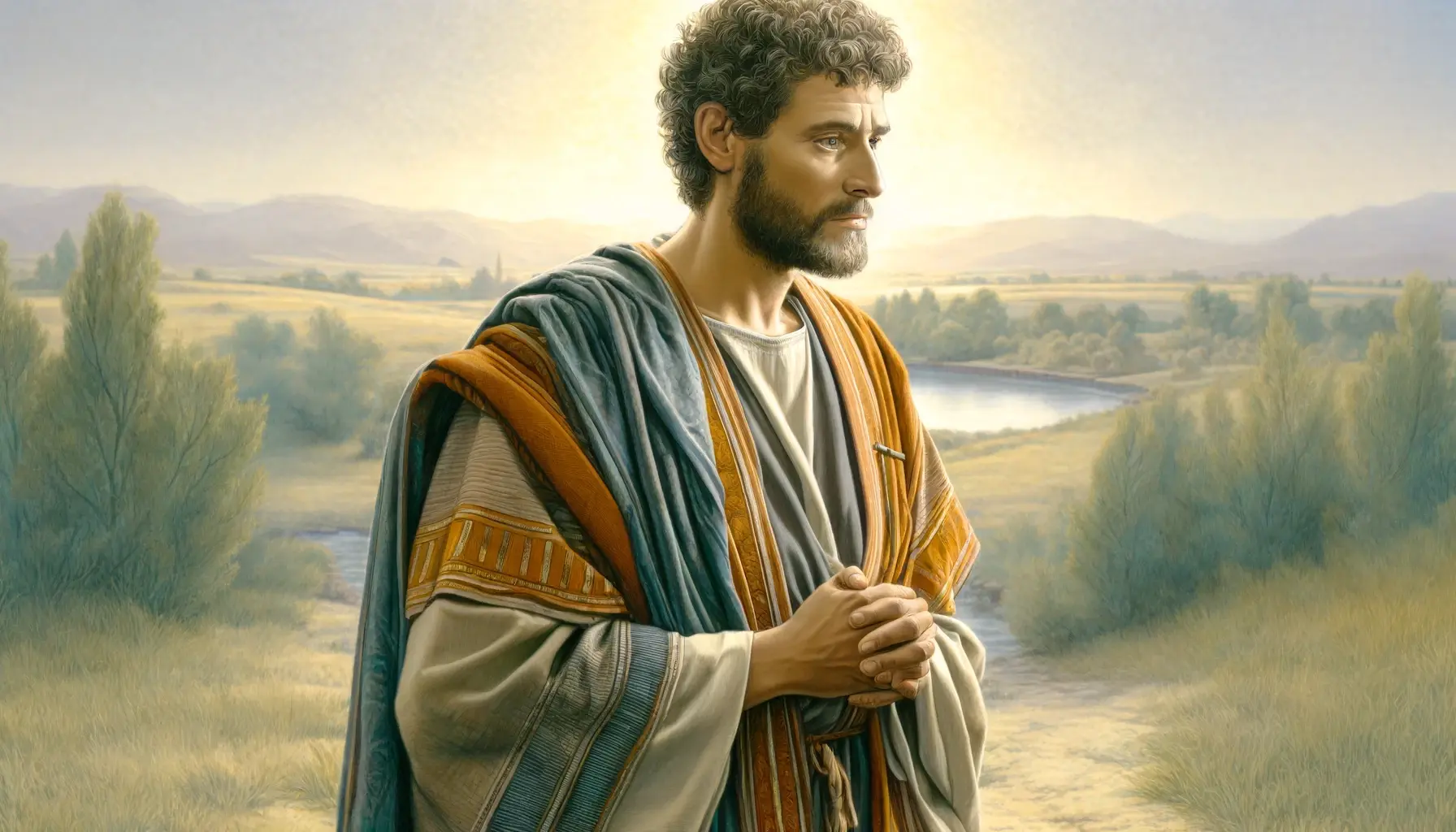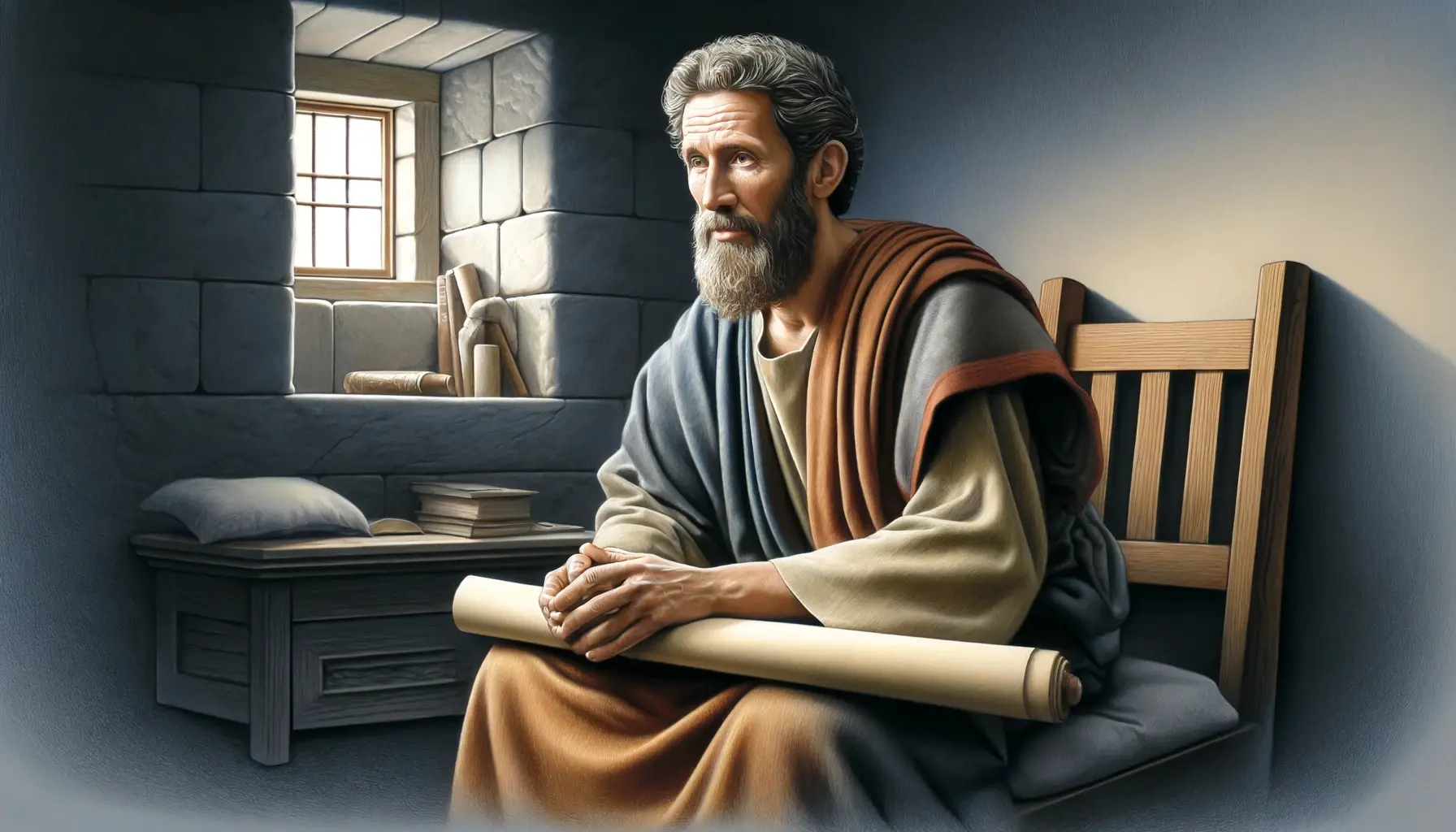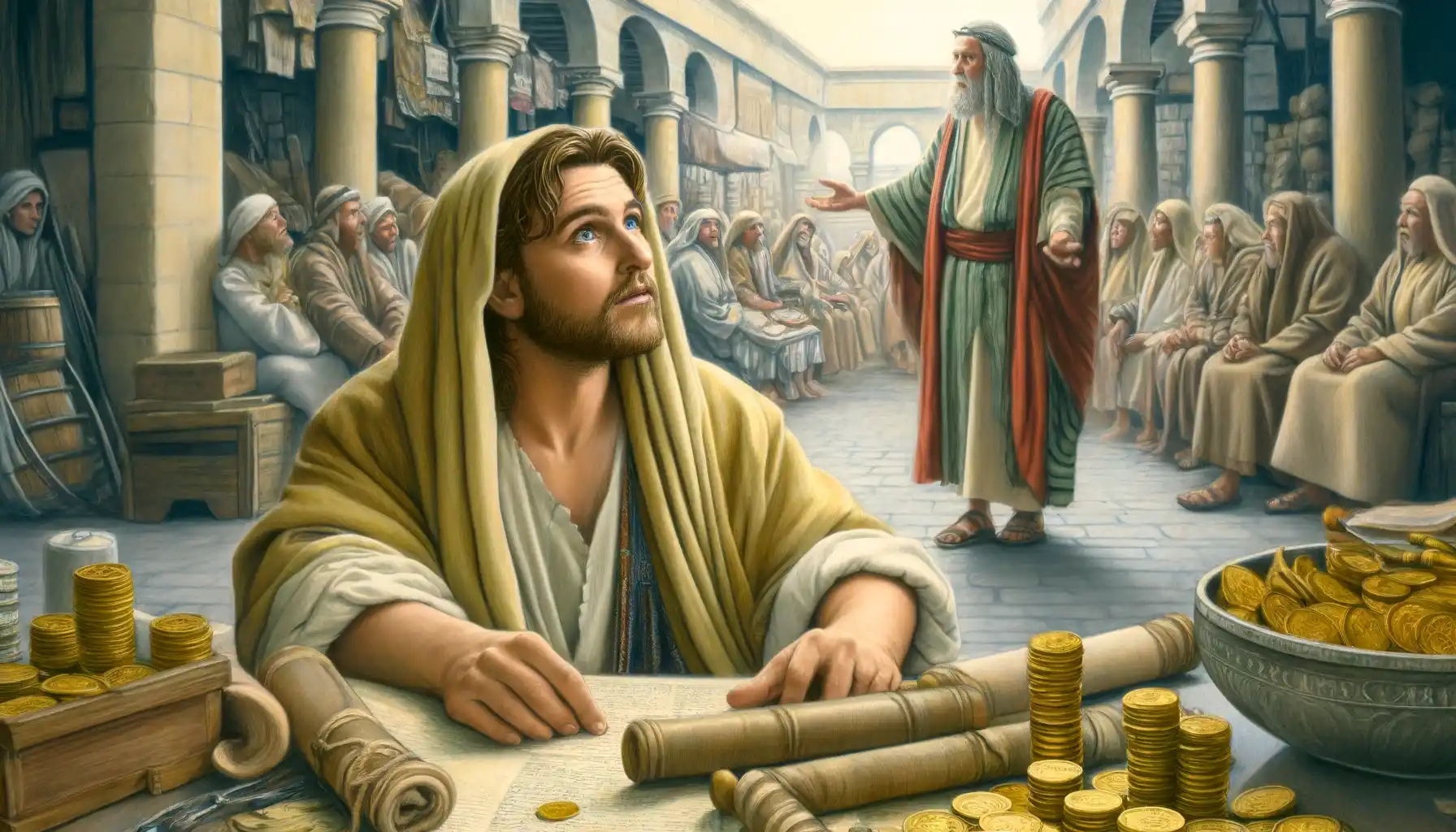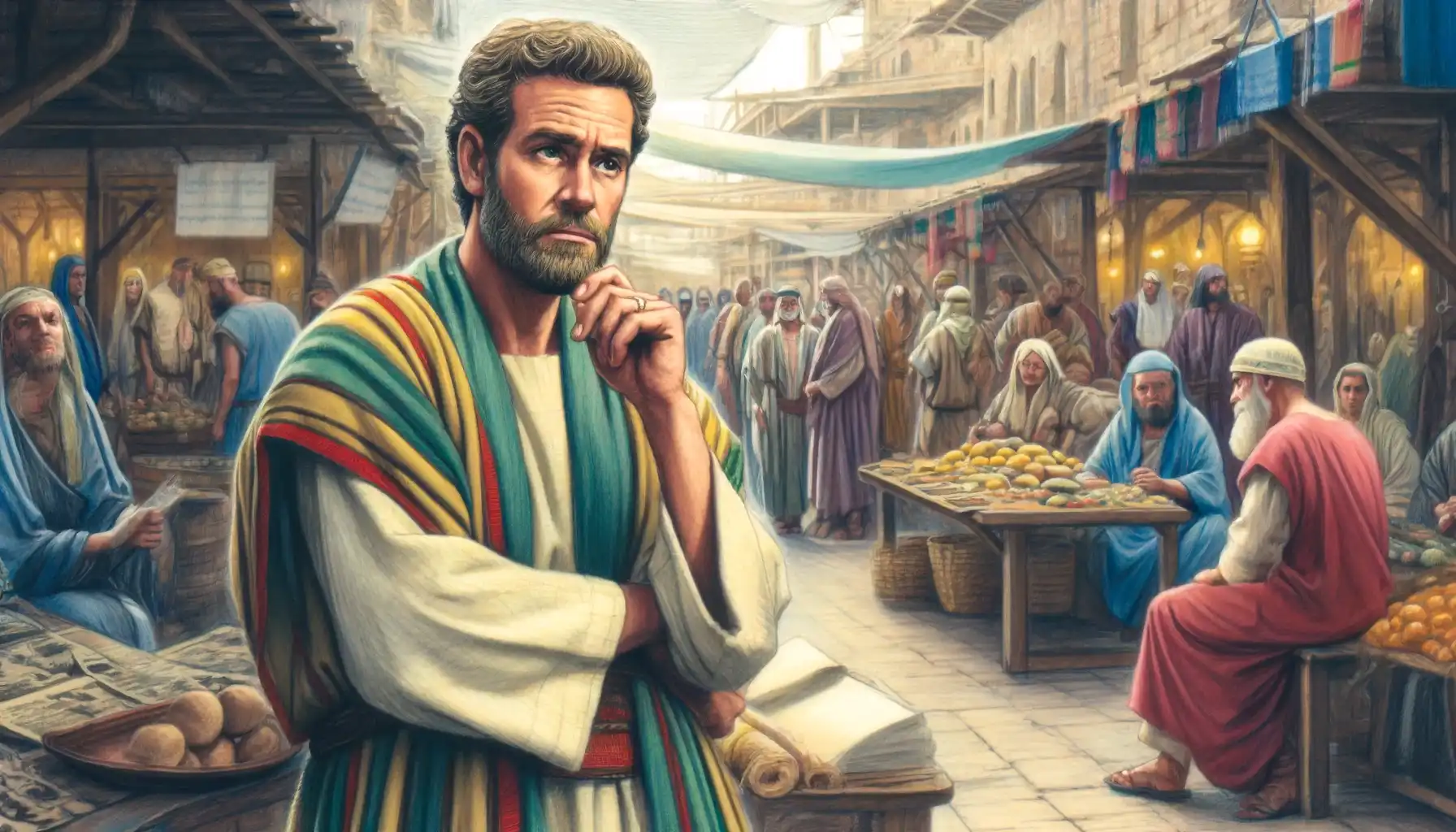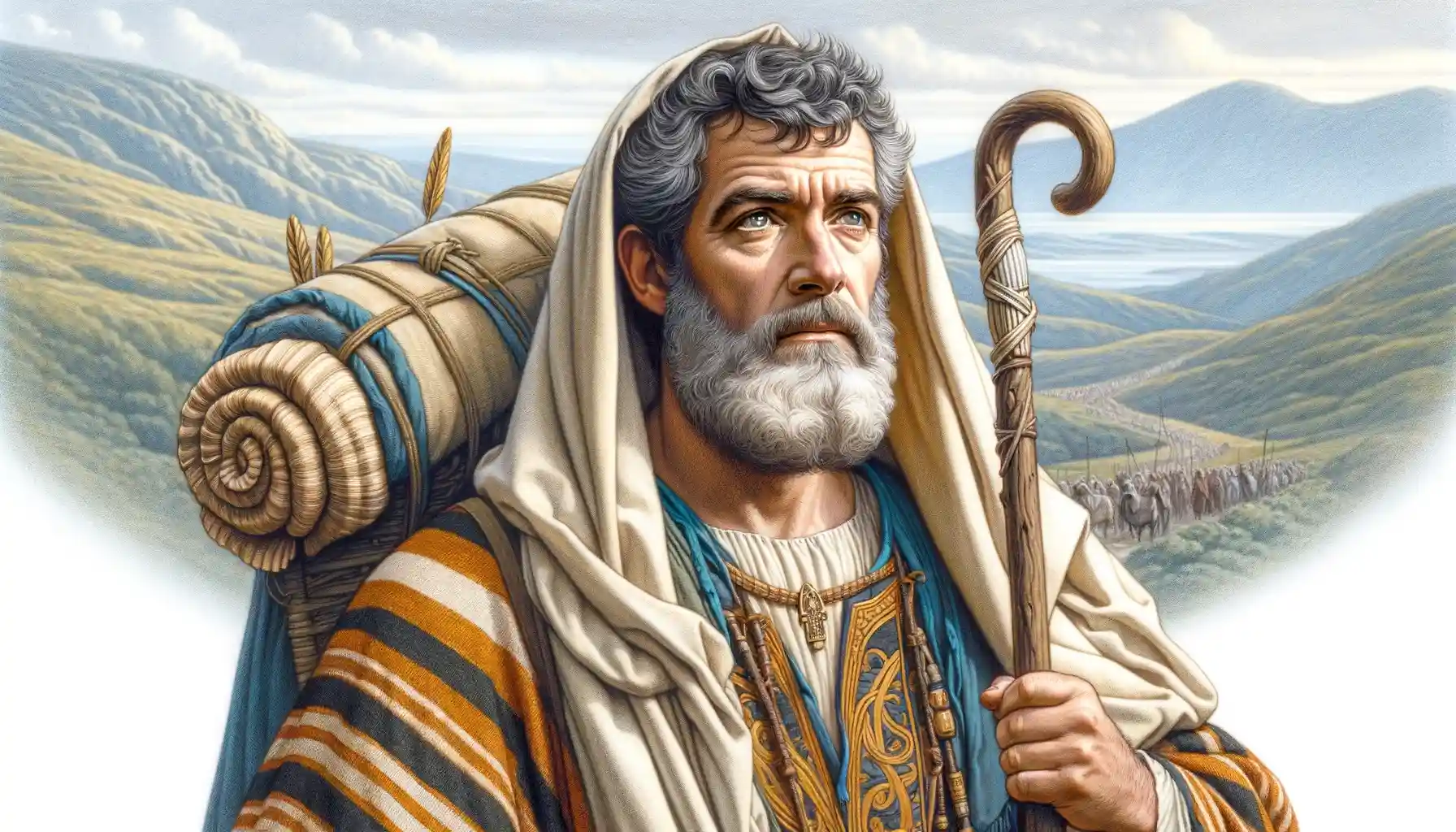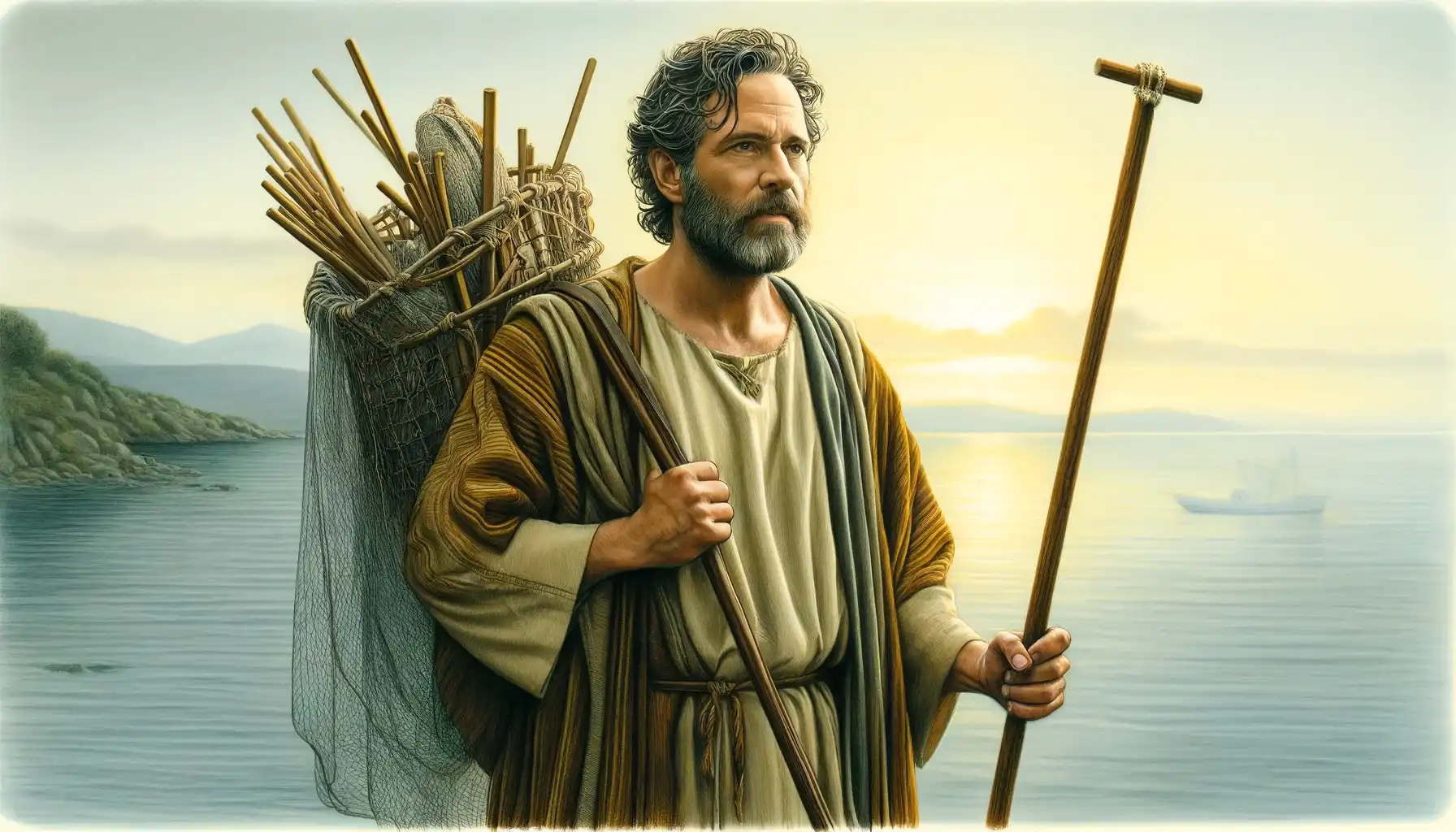Thaddaeus, also known as Judas son of James, is a less prominent but significant apostle in the New Testament, distinguished from Judas Iscariot and known for his questioning of Jesus about His revelations, extensive missionary journeys across regions including Judea, Samaria, and Syria.
James the Less, one of the Twelve Apostles of Jesus Christ and traditionally identified as the son of Alphaeus, is known for his humility and lesser prominence compared to James the Greater, likely referred to as “the Less” due to his younger age or smaller stature.
Thomas the Apostle, also known as Didymus, is renowned for his initial skepticism about Jesus’ resurrection, famously declaring he would not believe until he could see and touch Jesus’ wounds himself, a moment that epitomizes his rational character; this skepticism was transformed into profound faith when Jesus appeared and invited him to verify His wounds, leading Thomas to exclaim, “My Lord and my God!”—one of the clearest proclamations of Christ’s divinity in the New Testament. Post-resurrection, Thomas is believed to have traveled to India, where he established one of the oldest Christian communities and was eventually martyred, his legacy enduring as a symbol of faith that develops from personal encounter and sacrifice, commemorated as the patron saint of architects and the blind, with his feast days celebrated in both the Western and Eastern Churches.
Matthew, also known as Levi, was originally a tax collector before heeding Jesus’s call to “Follow me,” leading to his immediate departure from his previous life and his transformation into one of the Twelve Apostles, demonstrating the inclusive nature of Jesus’s ministry. Traditionally credited as the author of the first Gospel, Matthew’s writings are characterized by their structured thematic approach and emphasis on Jesus as the fulfillment of Old Testament prophecies, aimed at a Jewish Christian audience. His Gospel, which includes detailed teachings such as the Sermon on the Mount, highlights themes like righteousness, the kingdom of heaven, and the universality of Jesus’s message, resonating with both Jews and Gentiles. Venerated as a saint, Matthew’s legacy extends to being the patron of accountants, bankers, and tax collectors, with his life story embodying profound themes of conversion, discipleship, and the transformative power of divine grace.
Bartholomew, also known as Nathanael in the Gospel of John, is a biblical figure whose journey from skepticism to profound faith exemplifies the transformation experienced by those who encounter Jesus; recognized by Jesus as “an Israelite indeed, in whom there is no deceit,” Nathanael’s straightforwardness and integrity mark him as a disciple who is both honest in his doubts and sincere in his conversion. Following Jesus’ resurrection and ascension, he embarked on missionary journeys to diverse regions including India, Armenia, Ethiopia, and Southern Arabia, facing significant challenges but also contributing to the Christian tradition in these areas; his martyrdom, characterized by being flayed alive and then crucified, underscores his commitment to his faith and his willingness to endure immense suffering for his belief in the Gospel, with his legacy continuing in his veneration as a saint, celebrated on August 24th in the Western Church and June 11th in the Eastern Church, and revered as the patron saint of various professions and causes.
Philip the Apostle, originally from Bethsaida and one of the original twelve disciples of Jesus, is depicted in the New Testament as a figure who sought practical comprehension of Jesus’ teachings, exemplified by his interactions during key events such as the feeding of the 5000 and the Last Supper. Known for his questioning nature, Philip played a crucial role in the early Christian church’s expansion, particularly among Greek-speaking communities, as highlighted by his encounter with the Ethiopian eunuch in the Acts of the Apostles. Continuing his ministry across regions such as Greece, Syria, and Phrygia, Philip’s evangelistic efforts often met with resistance from local authorities, ultimately leading to his martyrdom by crucifixion or other means, thus symbolizing the ultimate witness to his faith and marking him as a pivotal figure in the spread of early Christianity.
John the Apostle, also known as John the Evangelist, is one of the most influential figures in the Christian New Testament, recognized for his profound contributions through several writings including the Gospel of John, three Epistles, and the Book of Revelation; he was one of the key figures among Jesus’ disciples, part of the inner circle, and privileged to witness significant events such as the Transfiguration and the Agony in Gethsemane. Traditionally attributed with deep theological insights, his works emphasize themes like divine love and truth, and his life, marked by close proximity to Jesus, exile on Patmos, and a natural death in Ephesus, reflects a blend of theological depth, apostolic authority, and visionary insight, deeply influencing Christian thought and doctrine across denominations.
James the Greater, son of Zebedee and brother of John, was one of Jesus Christ’s Twelve Apostles, notable for his fervent faith and passionate devotion, which earned him and his brother the nickname “Boanerges” or “sons of thunder.” He witnessed pivotal events like the Transfiguration and the Agony in the Garden due to his status within Jesus’ inner circle. His ministry was tragically cut short when he became the first apostolic martyr, executed by the sword under King Herod Agrippa I around AD 44, highlighting the dangers faced by early Christian evangelists. Venerated as the patron saint of Spain, James’ legacy continues to inspire through the Camino de Santiago, a major pilgrimage route leading to his shrine in Santiago de Compostela, where he is symbolized by the pilgrim’s hat and scallop shell, reflecting his enduring influence as a spiritual guide and protector of pilgrims.
Andrew, one of the twelve apostles of Jesus, is a compelling figure in Christian history, embodying the zeal and humility of early Christian apostleship; his background as a fisherman and initial discipleship under John the Baptist set the stage for his recognition of Jesus as the Messiah, leading to significant acts such as introducing his brother Peter to Jesus and facilitating key events like the feeding of the 5000. His post-resurrection missionary journeys through areas around the Black Sea and modern Greece and Turkey, and his martyrdom on an X-shaped cross in Patras, underscore his devotion and commitment, while his veneration as the patron saint of Scotland, Russia, and Greece reflects the broad geographic impact of his evangelistic missions, continuing to inspire faith and devotion through his legacy of apostolic service and sacrifice.
Peter’s life story is a powerful narrative of transformation, illustrating a journey from doubt and denial to restoration and committed leadership, resonating with themes of fallibility and redemption, and underscoring the human capacity for spiritual growth and resilience, while his legacy, as both a flawed individual and a revered apostle, continues to inspire and instruct believers on the dynamics of faith, leadership, and divine grace.

